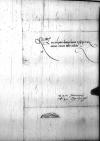List #2043
Sigismund I Jagiellon do Ioannes DANTISCUSCracow (Kraków), 1539-01-11
| odebrano [1539]-01-26 Rękopiśmienne podstawy źródłowe:
| ||||
Tekst + aparat krytyczny + komentarz Zwykły tekst Tekst + komentarz Tekst + aparat krytyczny
Reverendo in Christo Patri, domino
Reverende in Christo Pater, sincere nobis dilecte.
Quam a nobis dari pecuniam petiit Paternitas Vestra ad sarcienda ea incommoda et detrimenta, quae sunt quibusdam oppidis illius bello Pruthenico illata, etsi non optimi exempli rem esse videbamus periculumque subesse, ne similiter alii quoque concedi sibi rogarent, habentes tamen meritorum multorum erga nos Paternitatis Vestrae rationem, fecimus non inviti, ut eam pecuniam illi pro reficiendis oppidis donaremus. Itaque trecentas istas marcas facile patimur, ut apud se retineat atque in eum de quo scribit, usum convertat.
Dat(ae) or Dat(um)⌈Dat(ae)Dat(ae) or Dat(um)⌉
Ad mandatum s(acrae) or s(erenissimae)⌈s(acrae)s(acrae) or s(erenissimae)⌉ maiestatis regiae proprium


 BCz, 1596, p. 318
BCz, 1596, p. 318